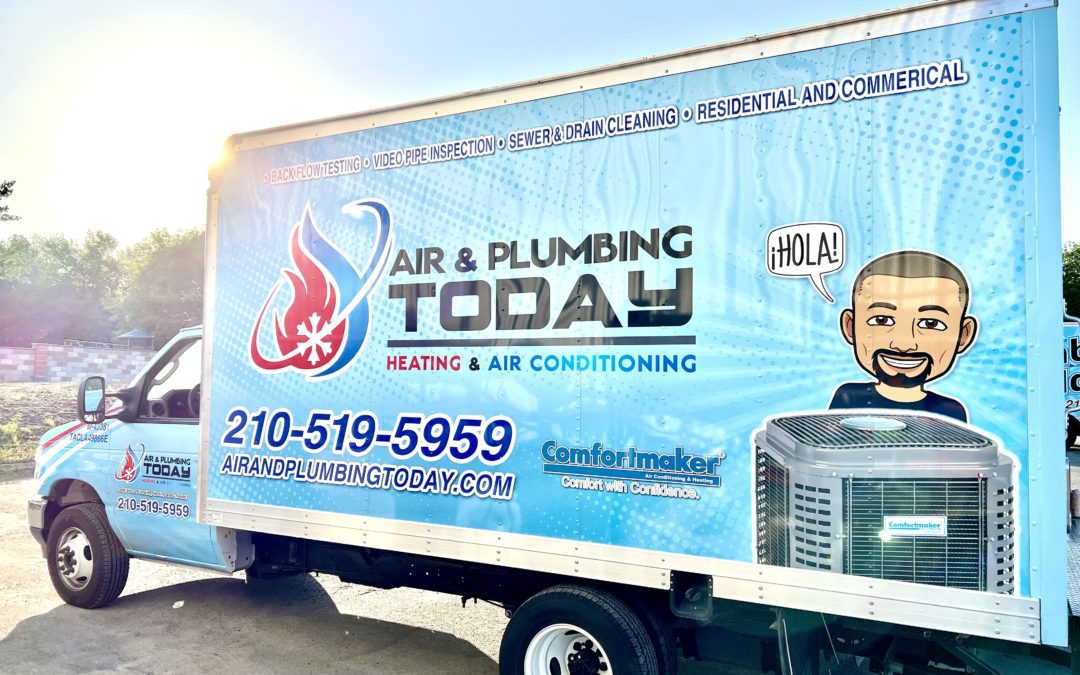Why Is My Air Conditioning Not Cooling
My Air Conditioning Is Not Cooling
Picture this. You just got home and you noticed that your house is hot, you just realized that your Air conditioning is not cooling. It’s a dreadful feeling, knowing that you’re going to have to bear the San Antonio heat until you can get it fixed. You’re probably wondering “Why is my air conditioner not cooling?”
Most likely, it’s time to call a pro to get your AC fixed. Here are the typical things you can check pretty easily just to make sure.
Check and reset the thermostat.
It may seem like a no-brainer, but occasionally when your air conditioning is working but is not cooling, it is simply the result of someone switching the thermostat from “Automatic” to “Fan.” Someone in your home might have tried to adjust the thermostat and could have hit the wrong button. The Easy DIY Fix could be… Check and reset the switch from “Fan” to “Automatic.”
Replace your dirty air filter.
If it’s been more than a couple of months since you’ve replaced the air filter in your AC system, it might be clogged, dirty and affecting the flow of air into your Air Conditioner. When filters get clogged with animal fur, dust and debris your AC system can’t bring in an adequate supply of air, which chokes your Air Conditioning system. This could actually cause your HVAC system to freeze up and you’ll see ice forming on your A/C coils. If your air filter was SUPER dirty and you see ice on your AC coils, let your unit rest for a while until the ice melts, put your new AC filter in and give it a whirl. If you’re cooling again, you might have just found your DIY fix. But if your unit freezes up again or stops cooling, it’s time to call a pro.
You might have a clogged condensation drain.
Air conditioners work in part by removing humidity from the air via condensation, and that moisture has to drain out of your AC unit. The condensation drain line (usually a white plastic (PVC) line lets water drain out to the outside of your home, or to a sink drain in your home, depending on your system. Condensation drains get clogged often by mold, algae, debris, insulation from your attic, etc. If the line gets clogged, your AC’s catch pan will fill up with water. To prevent that water from overflowing into your home and causing water damage, there’s a sensor in the pan that will detect it and shut your system off until the drain line can be cleared. Locate the end of the condensation drain line either outside your home or underneath a sink inside a cabinet and visually inspect it for clogs. If you see a clog, carefully clear it out with the end of a small screwdriver or similar narrow item. However, most clogs are WAY inside the line and need to be blown out by a professinal with an air compressor.
Clear the area around the outside AC Unit compressor.
If dry leaves, grass and debris have piled up against the compressor unit, it may not be able to draw in enough air to function properly. Clean away all debris or anything else that might be crowding the unit, such as weeds or overgrown vines. This could be an easy DIY fix however it’s not as common as you might think.
Dirty AC coils.
If your air conditioner is working but not cooling, dirty coils may be the culprit. The typical AC system has two sets of coils: condenser coils, which are located in the outside compressor unit and evaporator coils, which are encased near the indoor blower unit. When either set of coils becomes dirty or covered with mold and debris, cold air output can suffer. Cleaning the coils involves removing the metal enclosures that protect them. But they are also easy to damage if you’re not using the right tools or if you don’t have experience dealing with dirty AC coils. Cleaning the outside unit coils is much easier as a good hose spray will clear away debris quite easily. The coils on your INSIDE AC unit are much more challenging to work with.If you don’t feel comfortable opening the inside AC unit you can ask a pro to clean them. If you’d like to try cleaning the coils on your own try to follow these steps:
Shut off the power to both the exterior and interior units at the breaker panel and remember that each one will be on a separate breaker.
Follow the AC manufacturer’s directions for removing the exterior compressor cage or the metal panels that house the evaporator coils. You can easily find your AC operating manual on the internet by searching the make and model shown on your unit’s sticker. To clean interior evaporator coils, spray a non-rinse evaporator coil cleaner like Nu-Calgon Evap Foam No Rinse, Frost King or Coil King cleaner onto the coils, which resemble copper or steel tubes. The non-rinse cleaner foams up on the coils and dissolves dirt and grime before liquefying and running into a condensation pan that empties into the condensation drain hose. Other types of cleaner will need a rinse after you apply them. Either way, most cleaners work great! If this process proves to be too challenging, just call a pro.
Know when it’s time to call the air conditioning professionals at Air & Plumbing Today in San Antonio!
If you’ve gone through the above steps and your AC system is still not cooling, the problem could be leaking refrigerant (Freon) or a failed compressor unit. Freon is federally regulated and may only be handled by a licensed HVAC professional. If the AC not blowing cold air is the issue and your AC system is more than 10 years old, you may have a failed compressor and need to purchase a new system. These issues can only be addressed by the pros, so make the call and we’ll respond fast… 210-519-5959!

Our Offices
3615 Tavern Oaks San Antonio TX 78247
2009 FM 620 N Lakeway, TX 78734
Call or Text Us
Email Us
Hours
24/7 EMERGENCY SERVICE
(A live person always answers)
Our Offices
3615 Tavern Oaks San Antonio TX 78247
2009 FM 620 N Lakeway, TX 78734
Call or Text Us
Email Us
Hours
24/7 EMERGENCY SERVICE
(A live person always answers)

